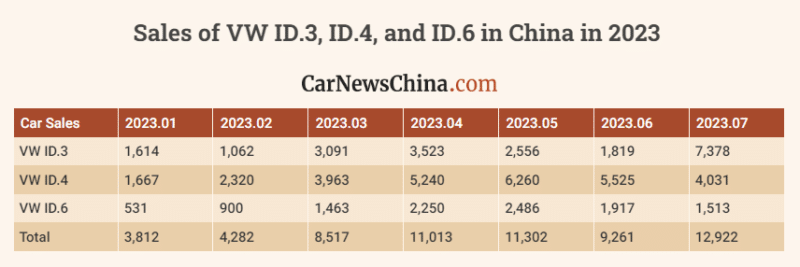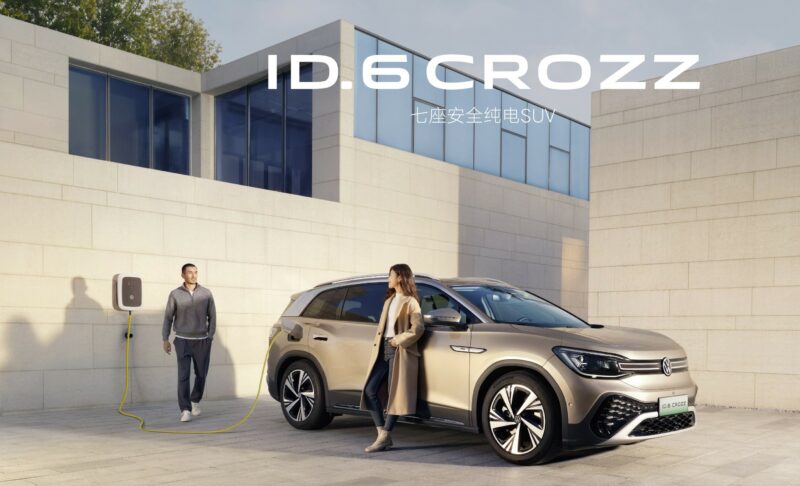On September 4, Volkswagen’s joint venture in China, FAW-Volkswagen ID.4 CROZZ, initiated an enticing promotion in the Chinese market, offering new car prices starting at 145,900 yuan (20,100 USD). This significant price reduction is noteworthy, especially considering that when the ID.4 debuted in China, it carried a price tag of 193,900 yuan (26,700 USD).
It’s important to note that Volkswagen conducts its operations in the Chinese market through two joint ventures: SAIC-VW and FAW-VW. Volkswagen holds an equal 50% stake in both these ventures. Notably, the ID.3 is sold through SAIC-VW.
These joint ventures offer two versions of the ID.4 and ID.6. The ID.4 CROZZ and ID.6 CROZZ belong to FAW-VW, while the ID.4X and ID.6X are associated with FAW-VW. The recent announcement regarding discounts pertains to FAW-SAIC’s ID.4 CROZZ. The ID.4 models from both joint ventures are similar in configurations, with prices generally aligned.
The VW ID.4 has been available in the Chinese market for over two years, with sales commencing in January 2021. This electric SUV is built upon Volkswagen’s MEB pure electric platform. It has advanced features, including IPA parking assistance, DOW door opening warning, emergency assistance system, AR-HUD, and ID. Light, and an Internet of Vehicles system.
The ID.4 offers two variants in the power department: rear-wheel drive and four-wheel drive. The rear-wheel-drive version features a permanent magnet synchronous motor delivering a maximum power output of 150 kW and a peak torque of 310 Nm. In contrast, the four-wheel-drive model employs dual motors at the front and rear, boasting a combined maximum power of 230 kW and a maximum torque of 460 Nm. Battery options for the ID.4 CROZZ encompass two capacity variants, yielding operating ranges under the CLTC (China’s New Energy Vehicle Test Procedure) standard of 425 km, 554 km, 600 km, and 442 km.
Two months ago, VW lowered the price of the ID.3 in China, changing the starting price to 119,900 yuan (16,500 USD), a price reduction of 16%. Subsequently, the sales of ID.3 in China continued to climb. The sales volume of ID.3 in China in June was 1,819 units, which increased to 7,378 units after the price cut was announced in July. Volkswagen has not announced the specific sales data of each model in August. Still, it has officially announced that the sales of ID.3 in China in August exceeded 10,000, far exceeding market expectations.
Let’s look at the sales of Volkswagen’s EV models in China.

Notably, Volkswagen adopted a similar sales strategy for the ID.4 as it did for the ID.3. The official discount announcement revealed that only 3,000 units are eligible for this promotion. However, consumer skepticism remains, given that the ID.3 discount was initially capped at 7,000 units but continued after more than 17,000 units were sold.
While these price cuts have significantly bolstered EV sales for Volkswagen in China, some industry analysts express concerns. Their apprehension stems from an analysis of Volkswagen’s production costs, indicating that the automaker may be operating at a loss with these aggressive price reductions. Such a situation could potentially impact Volkswagen’s and Chinese partners’ profits.
Source: Volkswagen China; iTHome



